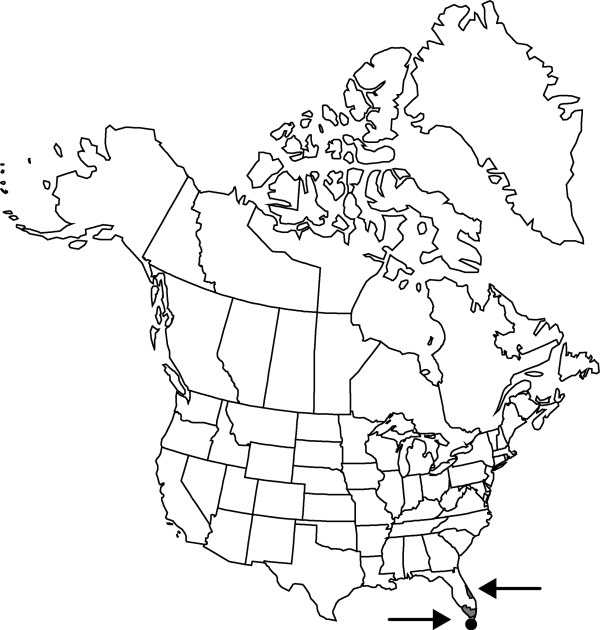Harrisia simpsonii
Cact. 2: 152, fig. 223. 1920.
Stems erect, reclining, or clambering, sometimes epiphytic and vinelike, to 4 m; ribs 9–10. Spines 7–9 per areole, 1–2.5 cm, yellow tipped or completely yellowish when young. Flowers: flower tube 10–15 cm, prominently ridged; scales turgid at base, with axillary tufts of hairs; hairs, white, soft and silky, flexible, 6–10 mm; buds with white hairs. Fruits dull red at maturity, depressed-spheric, 40–60 mm diam.
Phenology: Flowering spring–summer.
Habitat: Sandy soils of dense thickets and hammocks, mangrove swamps
Elevation: 0 m
Discussion
Of conservation concern.
D. F. Austin (1984) suggested that the isolated populations and/or clones of Harrisia simpsonii are as different from each other as are the two species, H. aboriginum and H. simpsonii. These observations imply that varietal rank might be more suitable for the two taxa. Further study is warranted.
A number of nocturnal-flowering cereoid species with large, white flowers are known as “queen-of-the-night.”
Selected References
None.
